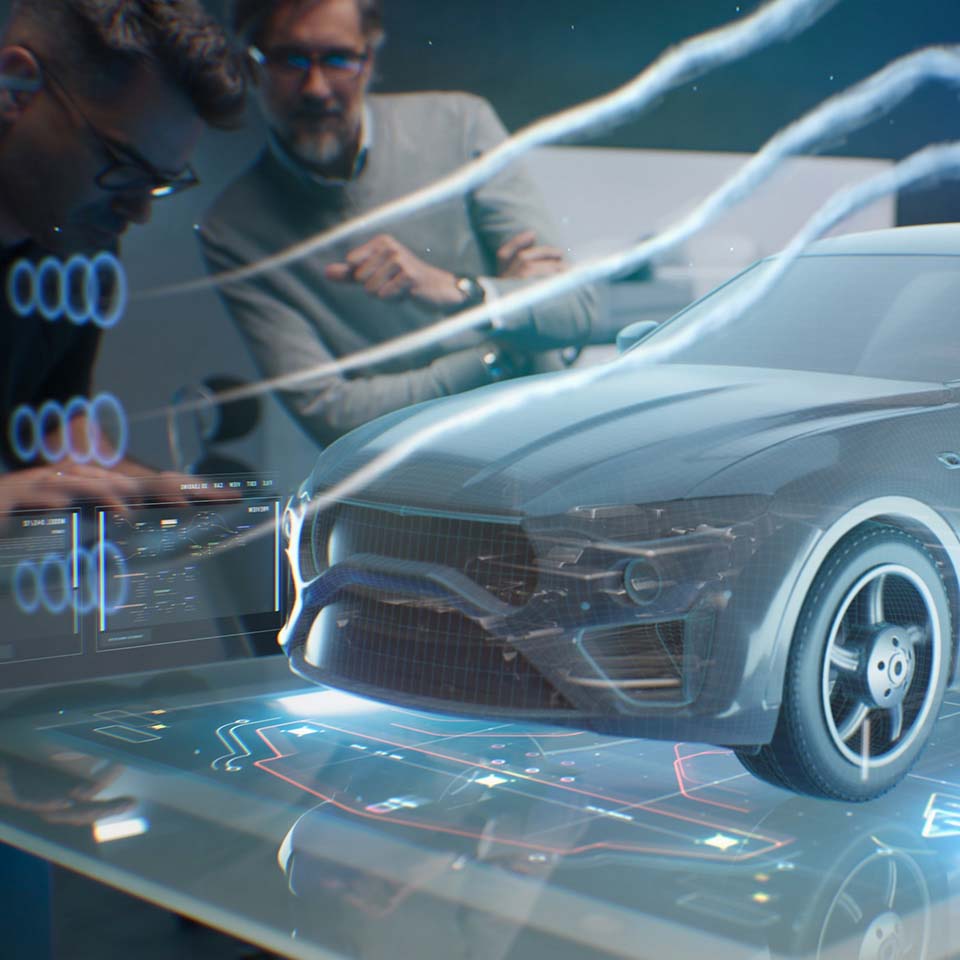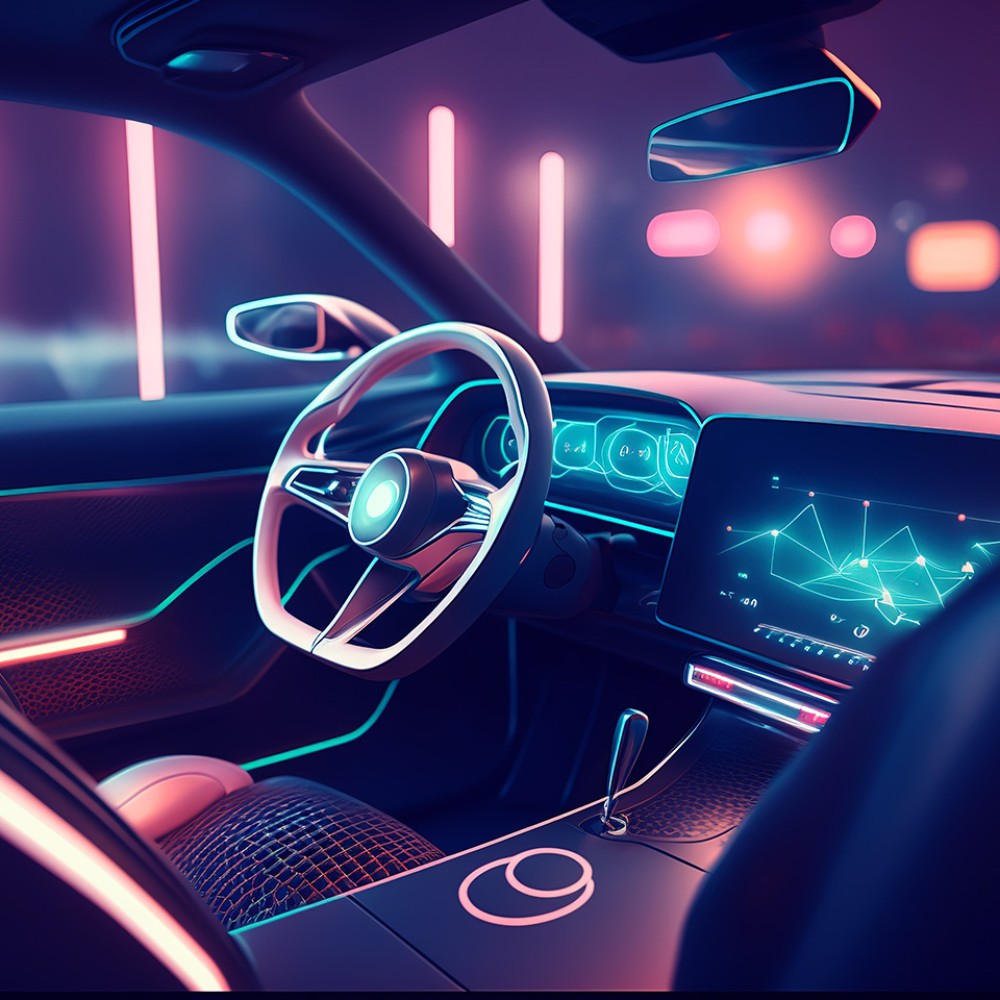In brief
- Accelerating development of software for the vehicle — efficiency gains through AI: AI allows for the automation of certain software development tasks, such as code generation, bug detection, duplicate bugs and testing. Machine learning (ML) techniques, like automated code generation and model-based testing, can significantly speed up the development process by reducing manual effort and identifying issues more efficiently.
- Driving value through services running in the cloud (e.g., predictive maintenance): Predictive maintenance has long been the holy grail of AI and ML for vehicles. Now with the availability of hardware, data and loads of processing power in the cloud, new ML algorithms (like transformers) are being used to accurately predict failures of systems.
- Use of AI in the vehicle: As is the case outside the vehicle, the possibilities of applying AI inside the vehicle are endless. For example, AI can be crucial for autonomous driving capabilities, advanced driver assistance systems and used extensively for personalization of the vehicle with contextual data or even emotional AI.
In recent years, automotive has continued to pivot to the development and production of software-defined vehicles, where the key characteristics of a car are defined by its software. The automotive industry is accelerating toward a future defined by connectivity, automation and data-driven decision-making. AI has emerged as an additional key driver of this transformation, reshaping software R&D, user experience, aftersales and the underlying processes in unprecedented ways. In this blog, we will explore the impact of AI on the automotive industry, focusing on software development and user experience.
Streamlining software R&D with AI-driven tools
AI-powered software development tools will revolutionize the way automotive software is designed, developed and tested, leading to improved efficiency and giving development teams more time to work on other topics. Today’s AI-powered tools already enable rapid prototyping and streamlining of the development process through a combination of automation, data analysis and machine learning. AI tools are such a revolutionary technology that many IT players from big techs to start-ups claim to have the ‘invention of the decade’.
To gain an understanding into which of these “inventions” may truly be the game-changer, we must analyze the alternatives on the market, identify possible legal implications, and integrate AI-based tools in daily operations into a dynamic environment — this can be challenging, risky and immensely rewarding at the same time.
As an experienced automotive innovator, Zoreza Global is already tackling the challenge. We’ve established an AI tools benchmarking framework to enhance the decision-making process of our clients and partners and to accelerate their AI-integration roadmap.
Development and generative AI
AI is already used to write code during development. In fact, the number of AI code generators is already significant: GitHub Copilot, Amazon CodeWhisperer and Tabnine are AI-powered code completion tools that are trained on billions of lines of public code and can generate code suggestions in real-time. These tools work directly in a developer's existing workflow, providing suggestions for whole lines or blocks of code, helping developers write code faster and with fewer errors.
There are legal implications that need to be considered when using generative AI tools to ensure there’s no IP infringement — major players are working to address this concern (and rightly so as there are alternative players in the market such as Aleph Alpha or open source solutions such as StarCoder).
Vehicle test and validation
Beyond coding, AI tools can also write unit tests for existing code. AI is playing a transformative role in the generation of test scenario data for system tests and validation in the automotive industry, especially in development of autonomous driving functions.
AI can produce synthetic data, mimicking real-world scenarios for diverse testing environments. This method is efficient and cost-effective, allowing the simulation of rare and challenging conditions that may not be feasible in real-world testing.
For instance, NVIDIA's DRIVE Sim uses AI to create photorealistic simulation scenarios for extensive testing of autonomous driving software. It can simulate various weather conditions, lighting situations and other variables. This allows the autonomous driving software to undergo the testing equivalent of millions of miles under diverse driving conditions without leaving the lab.
Enhancing vehicle performance and energy efficiency
AI is enabling the development of intelligent powertrain systems that adapt to driving conditions, optimize vehicle performance and reduce energy consumption. This has significant implications for both electric and internal combustion engine vehicles.
Audi's e-Tron electric SUV uses AI to optimize energy consumption by analyzing driving behavior, weather data and topography. This results in improved range and performance as the system dynamically adjusts the energy distribution between the front and rear electric motors.
Improving user experience with personalized and intuitive features
The integration of AI in automotive infotainment systems is enhancing user experience by offering personalized and context-aware interactions. Voice recognition, natural language processing and AI-based recommendations are just a few examples of how AI is transforming in-car interactions.
For example, BMW's Intelligent Personal Assistant (IPA), a project where Zoreza Global played a key role, uses AI to understand natural language commands and provide context-aware responses. It learns a driver's preferences and habits over time, personalizing the user experience and making it more intuitive.
Advanced driver assistance systems and autonomous driving
AI is driving the development of increasingly sophisticated advanced driver assistance systems (ADAS) and paving the way for fully autonomous driving. Deep learning algorithms and sensor fusion techniques enable vehicles to perceive their surroundings, make decisions and navigate complex environments.
For example, Waymo, Alphabet's self-driving car project, employs AI to process vast amounts of data from sensors such as LIDAR, cameras and GPS to make real-time decisions. Their AI algorithms have been trained on millions of miles of driving data, allowing vehicles to navigate safely and efficiently even in challenging conditions.
Predictive maintenance and vehicle diagnostics
AI-powered diagnostic tools are making it easier for automotive manufacturers and service providers to identify potential issues before they become critical. These tools analyze data from vehicle sensors and use machine learning algorithms to predict the likelihood of component failures, reducing downtime and maintenance costs.
Example: General Motors (GM) has implemented AI-based predictive maintenance in its OnStar platform. The system analyzes vehicle data and alerts drivers of potential issues, such as battery health or engine performance, helping to prevent breakdowns and improve vehicle lifespan.
Beyond SDVs
The automotive industry has been going through a significant transformation for software-defined vehicles, but the next wave is coming. AI is driving a paradigm shift in the automotive industry, revolutionizing software R&D and enhancing user experience in ways that were previously unimaginable. As AI continues to advance and become more deeply integrated into vehicles, we can expect even more transformative changes to the way we design, develop and interact with our cars.










